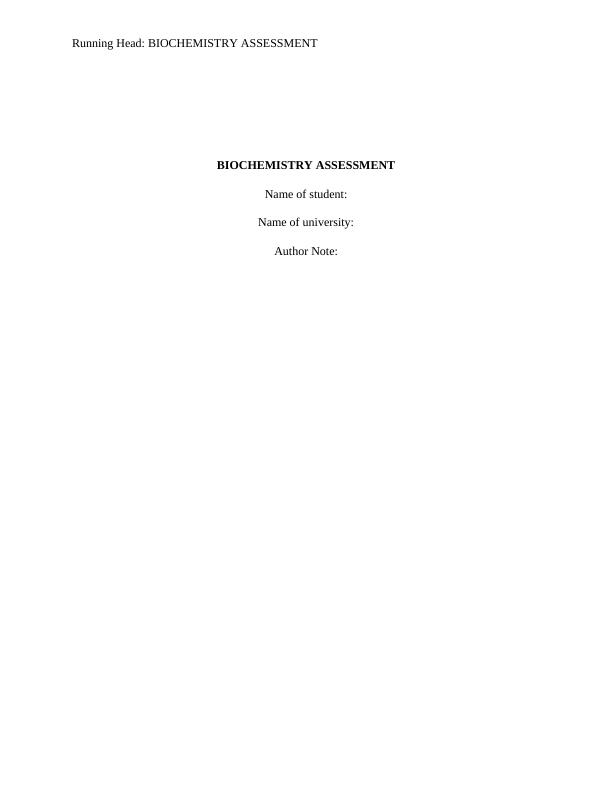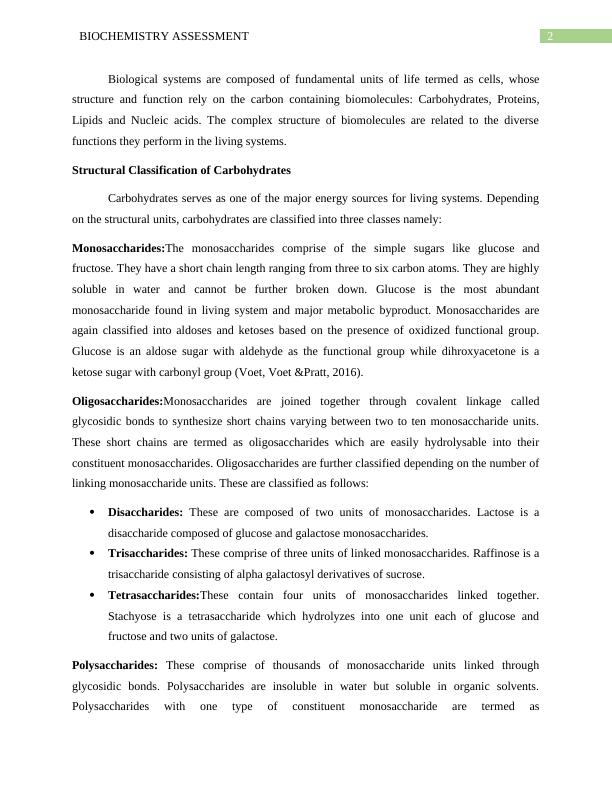Biochemistry Assessment - Study Material for Carbohydrates, Proteins, Lipids and Nucleic Acids
Developing understanding of key chemical concepts related to health science.
10 Pages2666 Words205 Views
Added on 2023-05-29
About This Document
This Biochemistry Assessment covers topics such as the structure and function of biomolecules in living systems, the role of lipids in maintaining cell membrane structure, and the effects of cyanide anion on cellular respiration. It also includes a translation exercise and a comparison of DNA and RNA components.
Biochemistry Assessment - Study Material for Carbohydrates, Proteins, Lipids and Nucleic Acids
Developing understanding of key chemical concepts related to health science.
Added on 2023-05-29
ShareRelated Documents
End of preview
Want to access all the pages? Upload your documents or become a member.
Structure and Function of Biomolecules and Genetic Expression
|9
|2244
|122



